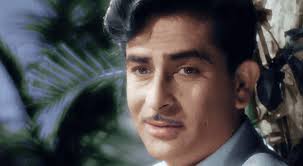
The period from the late 1940s to the early 1960s is regarded by film historians as the Golden Age of Indian cinema.
Satyajit Ray is recognized as one of the greatest filmmakers of the 20th century.
This period saw the emergence of the Parallel Cinema movement, mainly led by Bengalis, which then accounted for a quarter of India's film output. The movement emphasized social realism. Early examples include Dharti Ke Lal (1946, Khwaja Ahmad Abbas), Neecha Nagar (1946, Chetan Anand), Nagarik (1952, Ritwik Ghatak) and Do Bigha Zamin (1953, Bimal Roy), laying the foundations for Indian neorealism and the Indian New Wave.
Satyajit Ray is recognized as one of the greatest filmmakers of the 20th century.
This period saw the emergence of the Parallel Cinema movement, mainly led by Bengalis, which then accounted for a quarter of India's film output. The movement emphasized social realism. Early examples include Dharti Ke Lal (1946, Khwaja Ahmad Abbas), Neecha Nagar (1946, Chetan Anand), Nagarik (1952, Ritwik Ghatak) and Do Bigha Zamin (1953, Bimal Roy), laying the foundations for Indian neorealism and the Indian New Wave.

 The Apu Trilogy (1955–1959, Satyajit Ray) won major prizes at all the major international film festivals and firmly established the Parallel Cinema movement. Pather Panchali (1955), the first part of the trilogy, marked Ray's entry in Indian cinema. The trilogy's influence on world cinema can be felt in the "youthful coming-of-age dramas that flooded art houses since the mid-fifties", which "owe a tremendous debt to the Apu trilogy". Cinematographer Subrata Mitra, who debuted in the trilogy, had his own important influence on cinematography globally. One of his most important techniques was bounce lighting, to recreate the effect of daylight on sets. He pioneered the technique while filming Aparajito (1956), the second part of the trilogy. Ray pioneered other effects such as the photo-negative flashbacks and X-ray digressions in Pratidwandi (1972).
The Apu Trilogy (1955–1959, Satyajit Ray) won major prizes at all the major international film festivals and firmly established the Parallel Cinema movement. Pather Panchali (1955), the first part of the trilogy, marked Ray's entry in Indian cinema. The trilogy's influence on world cinema can be felt in the "youthful coming-of-age dramas that flooded art houses since the mid-fifties", which "owe a tremendous debt to the Apu trilogy". Cinematographer Subrata Mitra, who debuted in the trilogy, had his own important influence on cinematography globally. One of his most important techniques was bounce lighting, to recreate the effect of daylight on sets. He pioneered the technique while filming Aparajito (1956), the second part of the trilogy. Ray pioneered other effects such as the photo-negative flashbacks and X-ray digressions in Pratidwandi (1972). During the 1960s, Indira Gandhi's intervention during her reign as the Information and Broadcasting Minister of India supported production of off-beat cinematic by FFC.

Commercial Hindi cinema began thriving, including acclaimed films Pyaasa (1957) and Kaagaz Ke Phool (1959, Guru Dutt) Awaara (1951) and Shree 420 (1955, Raj Kapoor). These films expressed social themes mainly dealing with working-class urban life in India; Awaara presented the city as both a nightmare and a dream, while Pyaasa critiqued the unreality of city life.


Epic film Mother India (1957, Mehboob Khan), a remake of his earlier Aurat (1940), was the first Indian film to be nominated for the Academy Award for Best Foreign Language Film. Mother India defined the conventions of Hindi cinema for decades. It spawned a new genre of dacoit films. Gunga Jumna (1961, Dilip Kumar) was a dacoit crime drama about two brothers on opposite sides of the law, a theme that became common in Indian films in the 1970s. Madhumati (1958, Bimal Roy) popularised the theme of reincarnation in Western popular culture.


Kumar (Muhammad Yusuf Khan) debuted in the 1940s and rose to fame in the 1950s and was one of the biggest Indian movie stars. He was a pioneer of method acting, predating Hollywood method actors such as Marlon Brando. Much like Brando's influence on New Hollywood actors, Kumar inspired Indian actors, including Amitabh Bachchan, Naseeruddin Shah, Shah Rukh Khan etc.
Ray's contemporaries Ghatak and Dutt were overlooked in their own lifetimes, but generated international recognition in the 1980s and 1990s. Ray is regarded as one of the greatest auteurs of 20th century cinema, with Dutt and Ghatak. In 1992, the Sight & Sound Critics' Poll ranked Ray at No. 7 in its list of "Top 10 Directors" of all time, while Dutt ranked No. 73 in the 2002 Sight & Sound poll.
Multiple films from this era are included among the greatest films of all time in various critics' and directors' polls. Multiple Ray films appeared in the Sight & Sound Critics' Poll, including The Apu Trilogy (ranked No. 4 in 1992 if votes are combined), Jalsaghar (ranked No. 27 in 1992), Charulata (ranked No. 41 in 1992) and Aranyer Din Ratri (ranked No. 81 in 1982). The 2002 Sight & Sound critics' and directors' poll also included the Dutt films Pyaasa and Kaagaz Ke Phool (both tied at #160), Ghatak's films Meghe Dhaka Tara (ranked #231) and Komal Gandhar (ranked #346), and Raj Kapoor's Awaara, Vijay Bhatt's Baiju Bawra, Mehboob Khan's Mother India and K. Asif's Mughal-e-Azam all tied at #346. In 1998, the critics' poll conducted by the Asian film magazine Cinemaya included The Apu Trilogy (ranked No. 1 if votes are combined), Ray's Charulata and Jalsaghar (both tied at #11), and Ghatak's Subarnarekha (also tied at #11).


























